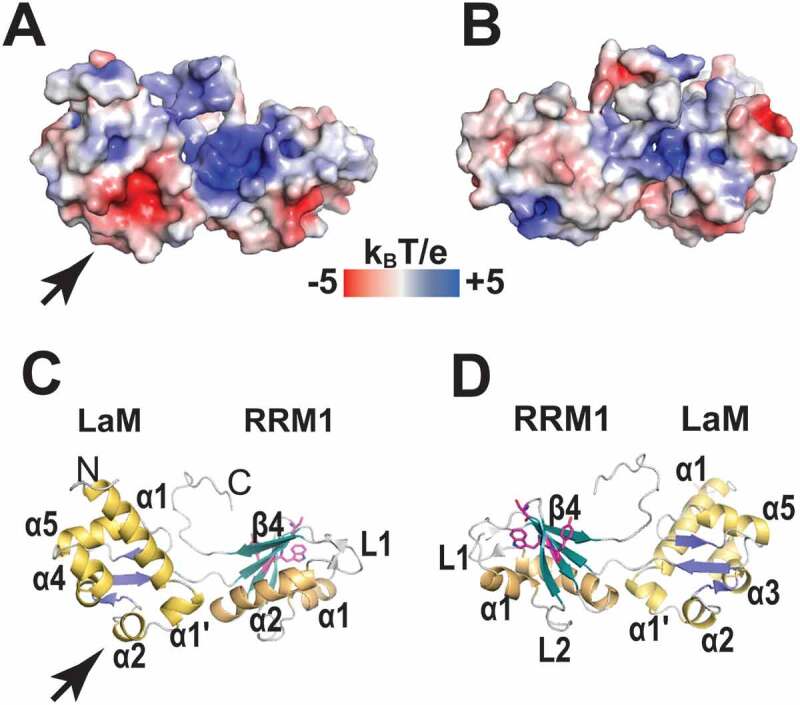Figure 6.

Electrostatic surface potential of the La-module of HsLaRP4A. (A) Electrostatic surface potential for HsLaRP4 (model 1 from PDB 6I9B). The orientation is the same as shown for HsLa in Fig. 3A and the arrowhead indicates where the 3ʹUUUOH triplet would be placed upon superposition with the structure of HsLa in complex with RNA. (B) View turned by 180°. (C-D) Cartoon representations in the same orientation as A and B, respectively, with helices in yellow (LaM) or orange (RRM1) and strands in blue (LaM) or green (RRM1). Three of residues in the RRM1 (W238, Y239 and S236) that showed chemical shift perturbation upon binding of the 15nt oligoA RNA ligand are highlighted in magenta. The electrostatic surface potential was calculated with APBS [75], ranging from −5 (red) to +5 (blue) kBT/e. The figures were generated using PyMOL (https://pymol.org/2/)
